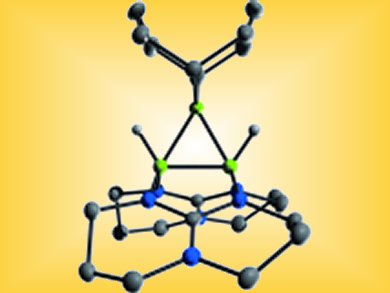What sets the chemistry of NHC boranes apart from common boron chemistry? D. P. Curran et al. answer this question in a Review by demonstrating how they can be used successfully in organic synthesis and radical polymerizations. Boron is also the topic of a Highlight by G. R. Whittell and I. Manners on the recycling of ammonia–borane and its use as a precursor to atomically thin BN films. In a further Highlight, C. Moberg discusses stereomutation in trigonal-bipyramidal systems. In their Editorial, Y.-T. Lee and A. W.-C. Yang consider contributions of chemistry and science in general to a sustainable future.
In the Communications section, NHCs come up again: C. W. Bielawski et al. use light to modulate the electron-donor properties of NHCs. W. Lin et al. present polysilsesquioxane nanoparticles for the targeted release of platinum-based cytotoxins for cancer chemotherapy. H.-J. Himmel et al. take readers back to boron: They succeeded in the synthesis and characterization of a doubly base-stabilized B3H6+ analogue (see picture).




